Too much freedom, too little control
Have you noticed that all popular AI tools look the same? They offer you an input field and invite you to express your intention. Take ChatGPT, for example. It’s basically a blank canvas that invites you to explain the task you want to complete.

All too often, expressing intent takes a significant amount of time. As a result, we can feel that we are having a prompt treadmill situation (https://uxplanet.org/5-things-to-do-to-avoid-prompt-treadmill-when-crafting-design-with-ai-0569d4894473) when we are stuck in progress and cannot move forward.
In this article, I want to discuss how we can solve the problem of intention articulation by changing the paradigm of AI tool design.
Evil blank canvas
Many people love ChatGPT UI for its simplicity. This is hard to argue about, as ChatGPT offers a very clean, minimalist UI. I personally see this UI as an iteration of Google Search where you need to start typing so the system can show you contextual suggestions.
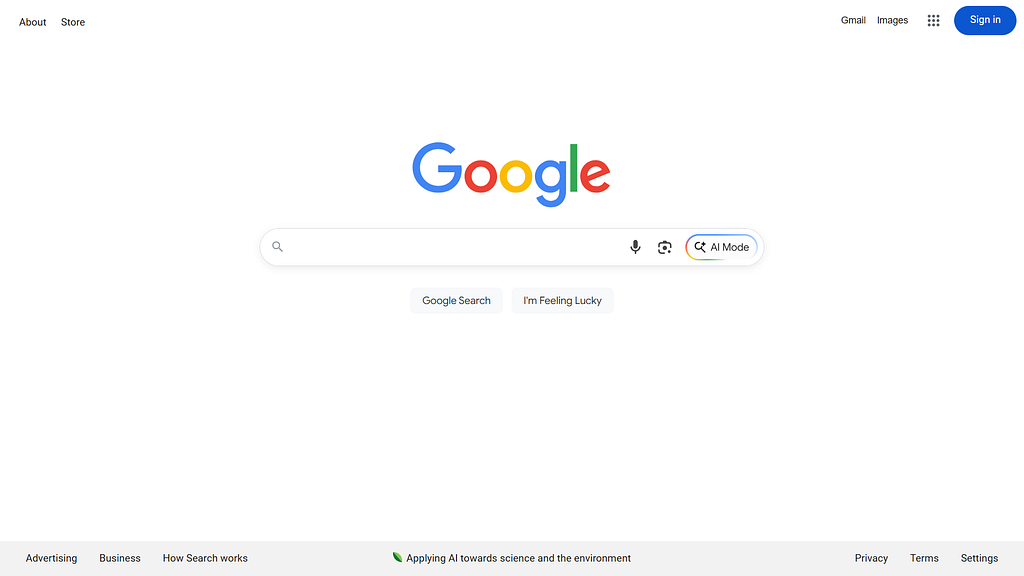
And actually, OpenAI follows this approach too. When you start typing, you will see a list of contextual prompt examples that the tool generates for you in real time.
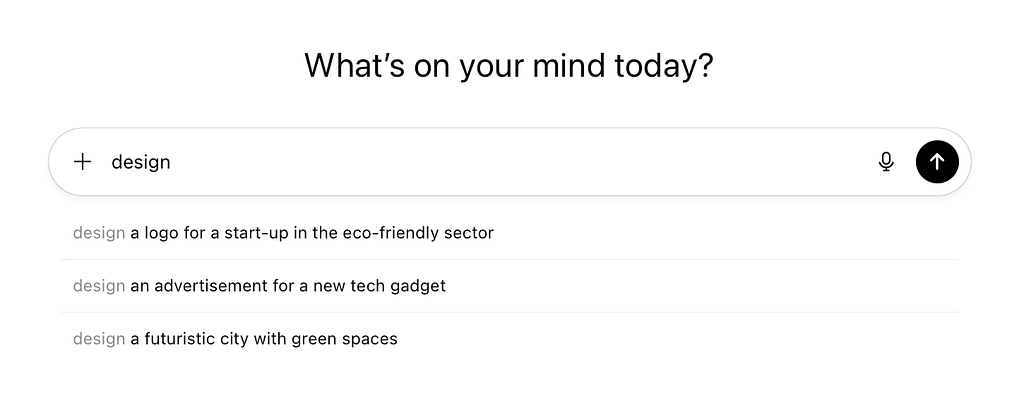
But once you reach a certain complexity in your prompt, the system stops offering your recommendations, and now you are on your own doing this task.

You need to hit submit and see results that ChatGPT will generate for you.
Why is this a big problem
The truth is — articulating intention takes time. And the more complex the task you’re solving at a moment, the more time it takes for the average person to explain what they want to see. This makes chat-based interfaces (where the majority of your input is in a text format) not very effective.
People have a hard time expressing their intent well. On average it takes around a minute for a person to articulate what they want to achieve.
Is there a simple solution to this problem?
Short answer — no. But there are ways we can make it a less critical problem for our users. Below, I will review some common ways of solving this problem.
Prompt packs for common tasks
This is quite a popular approach to solving the problem. Why not offer a collection of prompts for a specific domain so that the users (i.e., designers, sales professionals, HRs) can take and use them in their work? Even OpenAI offers prompt packs for different needs.
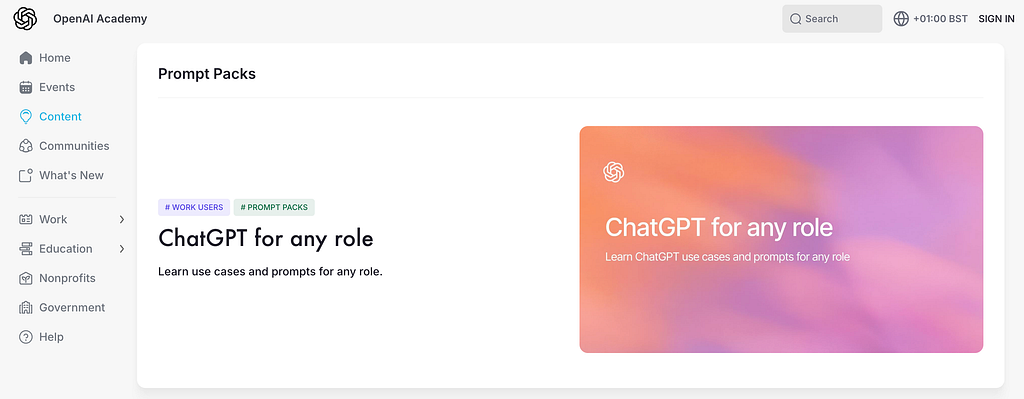
At first glance, this approach might look legit, but the truth is prompt packs don’t actually solve the prompt articulation problem; they just outsource it.
The real challenge isn’t just having a good prompt. It’s about translating human intent (often fuzzy, incomplete, or contextual) into a structured input an LLM can reliably execute.
That requires:
- Understanding context (what the model already knows)
- Managing constraints (style, tone, format, goals)
- Handling iteration (refinement based on feedback)
- Maintaining consistency across sessions, tools, and users
Prompt packs don’t address any of these layers; they just give you a library of pre-written instructions. Yes, these instructions are tried and tested, and they perform well in general cases. But when it comes to the actual, specific problem that a particular person is solving at the moment, these instructions become less valuable.
Providing contextual examples
Okay, prompt collection is not a very elegant way of helping user articulate their intention. But what about contextual examples that we can provide right next to the input (aka popular use cases)? Figma Make follows this approach.
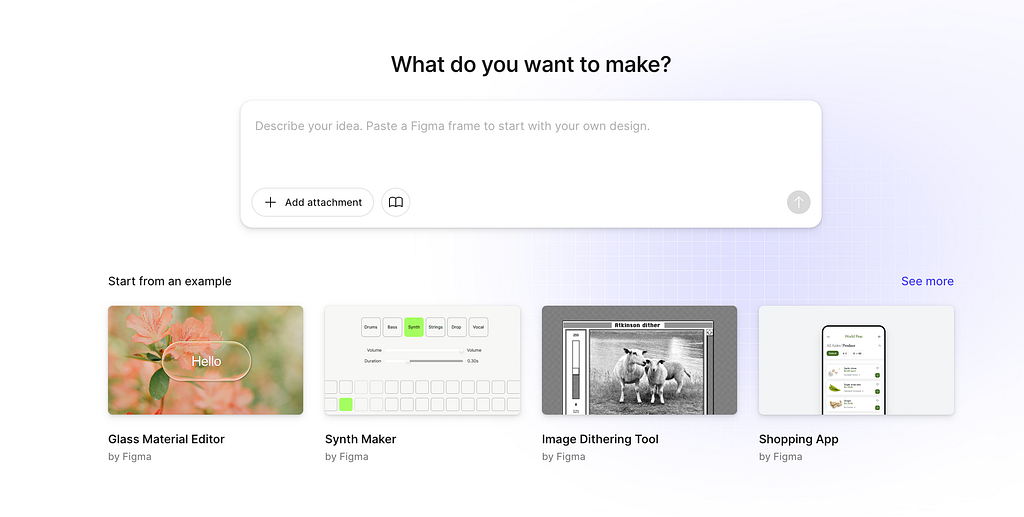
This approach is better than a stand-alone collection of prompts, but it is still very limited. First, examples that we offer for users might simply not work for them (i.e., I don’t see a reason why I should create Synth Maker when I have a very specific SaaS page to design).
Second, this approach work only for narrowly-focussed AI tools — tools like Figma Make that work in a particular domain like design. For general-purpose tools like ChatGPT, it can be very hard to come up with a collection of examples that will work for types of users. I’m not saying that it’s impossible, but it will require collecting information about users to offer personalized recommendations.
Using AI to write the prompt
Instead of trying to write a prompt yourself, many users rely on AI to do the job. And in reality, many times, AI writes a more sophisticated prompt than the end user. For example, below I ask ChatGPT to write me a prompt for the home page design of an e-commerce application.
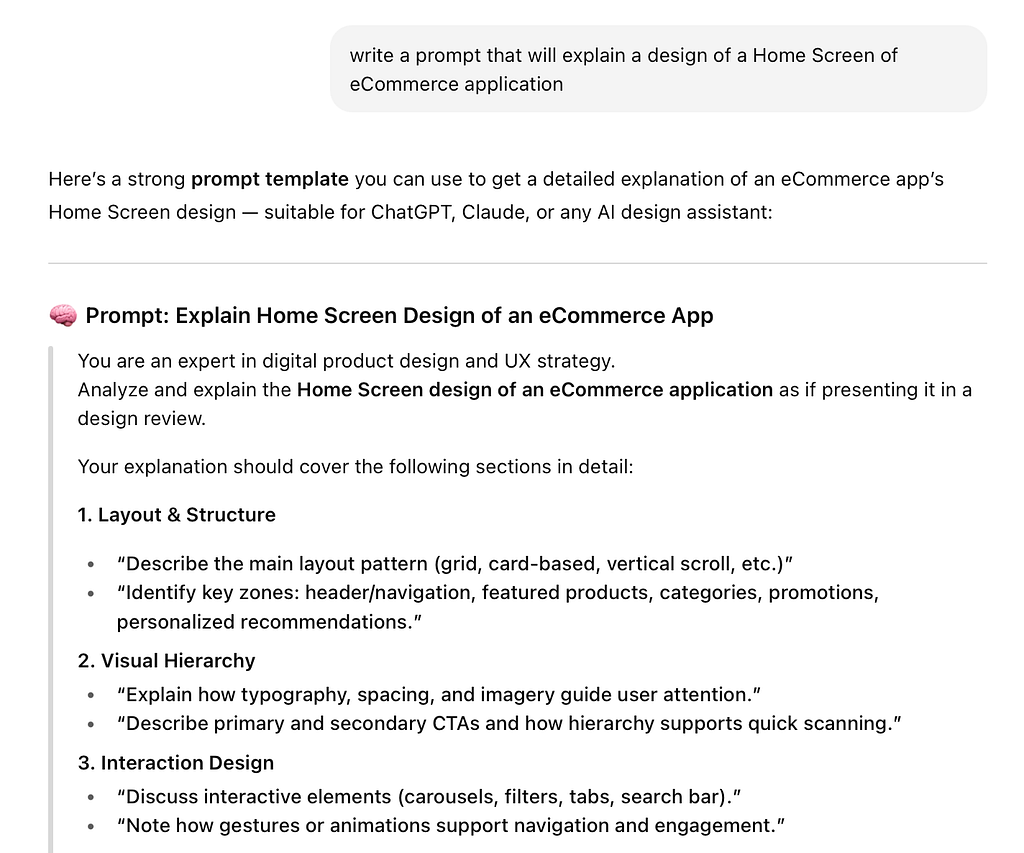
The next thing I need to do as a user is to take this prompt and tweak it.
Tweaking the existing prompt will take me much less time than writing it from scratch. But the problem is that ChatGPT doesn’t treat generating a prompt by AI as a standard use case scenario. As a user, you can prompt ChatGPT to do it, but you still need to think about this use case first.
Digging deeper into ChatGPT (and similar AI tools) core product design decisions
Why do ChatGPT and similar AI tools not guide the user on writing the prompt? The answer is ChatGPT’s core UX model. It is built around a conversational interface, not an interaction design model.
It assumes that:
- You’ll express your intent in natural language
- The model will infer meaning from text
- Refinement happens by re-phrasing
That’s fine for simple use cases when you know exactly what you want to get, but not for complex scenarios when you need more complex, modular prompts.
Don’t crumble UI with contextual controls during interaction with AI
Can we streamline interaction with AI by offering tools like prompt builders, context editors, and schema editors? Short answer — no. While adding these tools might sound like a reasonable decision, in reality, they can introduce complexity — more fields, parameters, dependencies, and states that the user should be aware of. Google already explored this path back in 2005 with its Advanced Search. They offer controls that help users submit more precise search queries. In reality, the user base of this feature was tiny, and Google removed it from regular search.
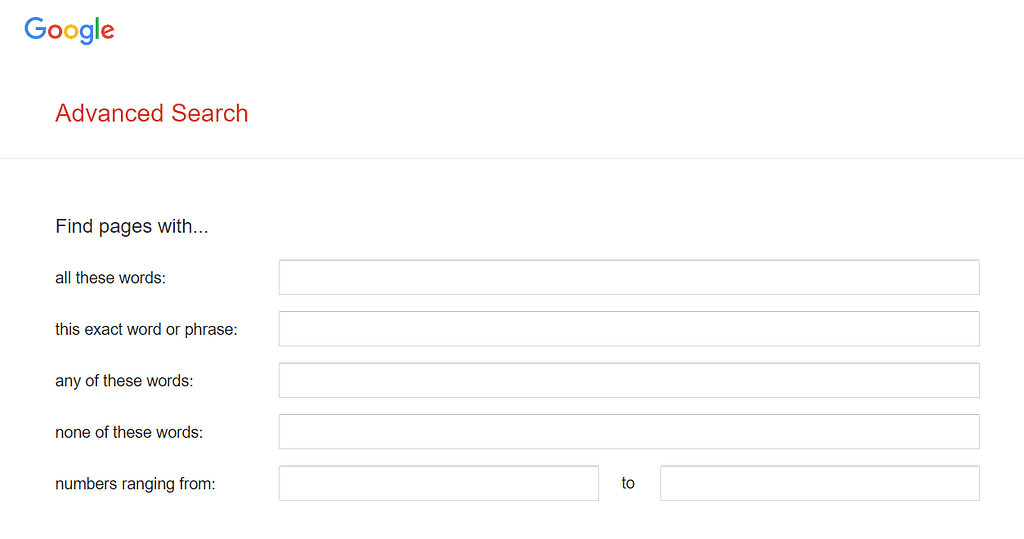
ChatGPT (and other AI tools) are optimizing for mass simplicity. So far, ChatGPT’s growth has depended on zero learning curve. You don’t need to learn anything about the tool to start using it. Adding some extra details will break the illusion of “magic conversation.”
Make it clearer how the input signal (prompt) impacts the output generated by AI
Another problem is that many users see AI as a black box that receives their request, processes it, and offers an output. They don’t know the workflow that AI goes through when performing a task.

Recently, AI tool creators started to fill this gap by creating an in-between state where the AI tool informs users about what it will do next once it receives a command from the user, and allows the user to either accept it or modify the workflow. One nice example is Figma Make, which outlines the structure of the future page it will design for us.
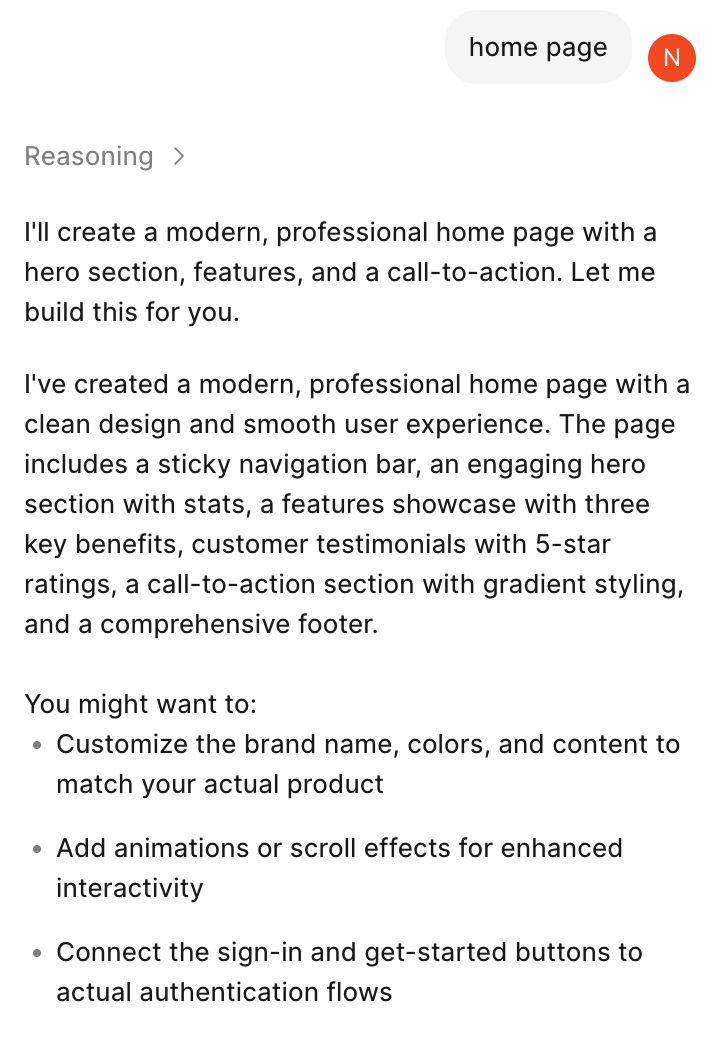
What can streamline the interaction with AI is offering Live Output Preview for users so that they can see in real time the output generated by AI.
While typing, show a live preview of what the output might look like based on the current prompt. This helps users tune the structure before committing.
This will also help avoid a transactional nature of interactions with AI , when we need to hit a Submit after writing our prompt and then wait for the system to process it.
Treat voice input as a primary way of interaction when crafting complex prompts
AI chatbots already support voice input along with typing, but I think that voice has more potential when it comes to refining complex prompts. But we need to shift from treating voice input as an alternative to text-based input to viewing it as a free-form way for users to express what they want to achieve.

When talking to AI, users should feel like they are not limited in their expressions and can interact with it just like they do when they talk with other people. This could lead to more abstract inputs, but the current evolution of AI tools should easily handle this.

🚨 New AI-powered product design community 🚨
If you’re passionate about building digital products and want to make the most of latest tools (including AI tools), I’d love for you to join me in the Product Design Community on Skool. You will have access to tutorials and cheatsheets for design and automation tools as well as live Q&A sessions with me.
👉 Join for free here: https://www.skool.com/product-design-7868
The curse of modern AI tools was originally published in UX Planet on Medium, where people are continuing the conversation by highlighting and responding to this story.